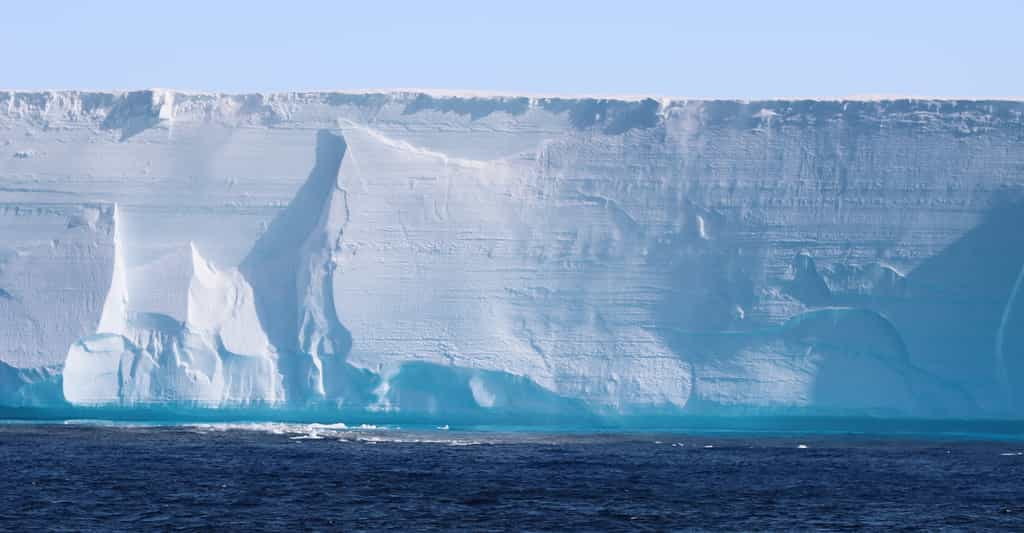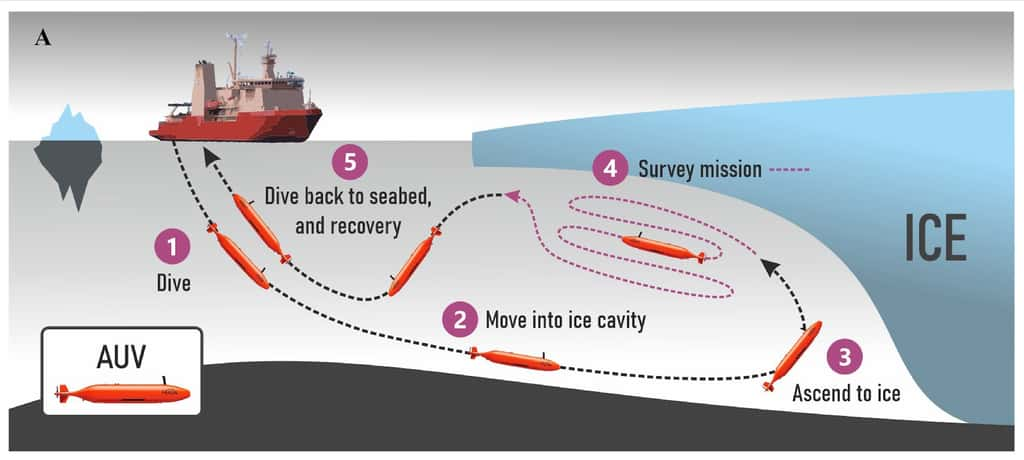
Antarctica is melting, but the region is still covered by a thick layer of ice. To explore its hidden side, the underside of the ice, researchers sent an autonomous underwater vehicle. It revealed clues to future sea-level rise.
Anthropogenic global warming is causing Antarctica to melt. The phenomenon is well known. For scientists, however, it’s not enough. They need to know more about the mechanisms involved. To better predict what lies ahead. To this end, researchers from the University of Gothenburg (Sweden) have, for the first time, sent an underwater vehicle – christened “Ran” – to explore the underside of the Dotson ice shelf in West Antarctica using sonar.
Glaciologists already had satellite data and ice cores at their disposal. But in the 27 days of its mission, the craft covered more than 1,000 kilometers in the water. It went as deep as 17 kilometers beneath the ice shelf, sending back unprecedented high-resolution data to oceanographers. “There aren’t many unexplored areas left on Earth. Seeing our Ran disappear into the dark, unknown depths beneath the ice, performing its tasks for over 24 hours without communication, was intimidating. For us, it was a bit like finally discovering the dark side of the Moon”, says Anna Wåhlin, lead author of the study.

THE RAN AUTONOMOUS UNDERWATER VEHICLE HAS BEEN PROGRAMMED TO CARRY OUT MISSIONS UNDER PACK ICE. AN ADVANCED MULTIBEAM SONAR SYSTEM MAPS THE UNDERSIDE OF THE ICE AT A DISTANCE OF AROUND 50 METERS. ANNA WÅHLIN, SCIENCE ADVANCES
Under the Antarctic ice, hypotheses are confirmed
It should be remembered that the western part of Antarctica is considered to have a potentially significant impact on future sea-level rise, due to its extent and location. But scientists know that better models will be needed to predict the speed at which the region’s ice shelves will melt with global warming.
In the journal Science Advances, researchers from the University of Gothenburg and their colleagues tell how they were able to confirm that the glacier that feeds the Dotson platform melts faster where strong underwater currents erode its base, because their vehicle measured these currents for the very first time. It also observed accelerated melting in the vertical fractures beneath the glacier.

AFTER AN INITIAL EXPEDITION IN 2022, THE RESEARCHERS RETURNED TO WEST ANTARCTICA IN 2024. THEY THEN LOST THEIR RAN UNDER THE ICE. FILIP STEDT, UNIVERSITY OF GÖTEBOR
And others don’t stand up to the data
The topology of the ice, on the other hand, came as a surprise. Researchers observed astonishing patterns at the base of the glacier. Ridges and valleys, plateaus and dune-like formations. Reliefs that current models struggle to explain. The only hypothesis that oceanographers can come up with at the moment is that these formations were formed by the flow of water under the influence of the Earth’s rotation.
After initial measurements in 2022, the researchers decided to repeat the operation in 2024. To document the changes under the Dotson platform. Unfortunately, after the first dive, their underwater vehicle disappeared. Without a trace. Their work is now mothballed until they find a replacement for their Ran. They still have a lot of data to analyze in greater detail. But if they are to succeed in correcting the erroneous assumptions of current models and gain a clearer picture of the ice cap’s future, they will still need to explore the underside of the ice shelves. To venture even further into the hidden side of Antarctica…
Source: FUTURA

